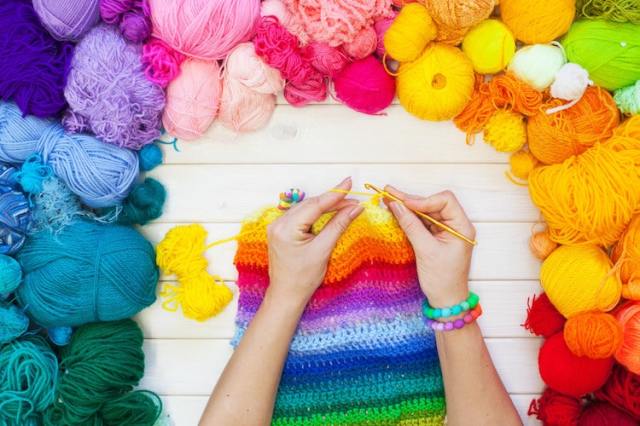Crochet is a process of creating textiles by using a crochet hook to interlock loops of yarn, thread, or strands of other materials. The name is derived from the French term crochet, meaning 'small hook'. Hooks can be made from a variety of materials, such as metal, wood, bamboo, or plastic. The key difference between crochet and knitting, beyond the implements used for their production, is that each stitch in crochet is completed before the next one is begun, while knitting keeps many stitches open at a time. Some variant forms of crochet, such as Tunisian crochet and broomstick lace, do keep multiple crochet stitches open at a time.
Crochet needles, sometimes called Shepherds' hooks, are made of steel, ivory, or box-wood. They have a hook at one end similar in shape to a fish-hook, by which the wool or silk is caught and drawn through the work. These instruments are to be procured of various sizes.
Crochet —a species of knitting originally practised by the peasants in Scotland, with a small hooked needle called a shepherd’s hook— has, within the last seven years, aided by taste and fashion, obtained the preference over all other ornamental works of a similar nature. It derives its present name from the French; the instrument with which it is worked being by them, from its crooked shape, termed 'crochet.' This art has attained its highest degree of perfection in England, whence it has been transplanted to France and Germany, and both countries, although unjustifiably, have claimed the invention.

